The popularity of chatbots has skyrocketed, increasing by 92% since 2019.
By automating routine tasks and customer interactions, customer service bots can save businesses time and money - all while enhancing the customer experience.
In fact, global cost savings from chatbots reached $11 billion in 2022 and continue to grow.
That said, if you’re considering a chatbot solution for your own business, you need to know how to measure its success - by calculating chatbot ROI.
Doing so is crucial to understanding whether your investment is driving meaningful results.
Luckily, this process is fairly straightforward once you know how to calculate your return on investment.
That’s why we’ve written this guide, covering...
- What is chatbot ROI (Return on Investment)?
- Key factors to consider when calculating chatbot ROI
- How to calculate the ROI for chatbots in three steps
- Real-world chatbot ROI case study: Klarna’s AI virtual assistant
TL;DR: How to calculate chatbot ROI (Return on Investment)…
- Assess costs: Development/deployment, use of AI technologies, scalability, ongoing maintenance, and updates.
- Quantify benefits: Operational cost savings, labour savings, improved efficiency, revenue generation, enhanced customer experience.
- Use ROI formula: ROI (%) = [(Benefits - Costs) / Costs] x 100
- Example: A chatbot costing $25,000 and generating $62,000 in benefits will yield a chatbot ROI of 148% using the formula: ROI (%) = [(62,000 - 25,000) / 25,000] x 100.

What is chatbot ROI?
Chatbot ROI refers to the financial and operational benefits gained from implementing a virtual agent.
Essentially, it calculates the benefits generated by a bot compared to the cost of implementing and maintaining it.
Understanding ROI is important because it allows businesses to measure the value of their investment.
A high chatbot ROI indicates your chatbot is working well and is a valuable asset to your business.
A low or negative ROI suggests changes may be needed in its design, functionality, or alignment with customer needs.

What factors should you consider for chatbot ROI calculation?
To accurately measure chatbot ROI, you first need to understand the factors that impact it.
These factors can be split into two categories: costs and benefits.
1. Assessing the cost
All chatbot expenses (both upfront and ongoing) need to be accounted for as they directly impact the return.
These expenses typically include the following…
Development
The first major cost is the initial development and deployment.
This can vary greatly depending on whether you choose to build a bot internally or use an external chatbot provider.
In-house development typically takes much longer and involves substantial upfront costs and resources.
On average, an initial in-house chatbot development project can incur $300,000- $700,000, depending on complexity and scope.
Development also requires expertise in design, programming, and software integration.
Because of this, some companies pay 6 figures just in consulting fees to set up their own bot.
On the other hand, an established chatbot provider can deliver a more efficient and cost-effective turnkey solution.
This reduces the time to market and eliminates the need for extensive development resources.
Provider solutions often support integrations with popular CRMs, contact centre software, and other backend systems.
This saves you the additional cost associated with complex integrations.
Providers also often handle ongoing updates and AI improvements, ensuring the solution remains cutting-edge.
The cost of a chatbot platform from a provider will vary based on factors like the complexity of training, the use of AI technologies, and the scale of deployment.
Fortunately, many providers (Talkative included) offer tiered pricing plans and flexible payment options, such as monthly or annual subscriptions.
This means you’ll be able to compare costs and find a solution that aligns with your business needs and budget.
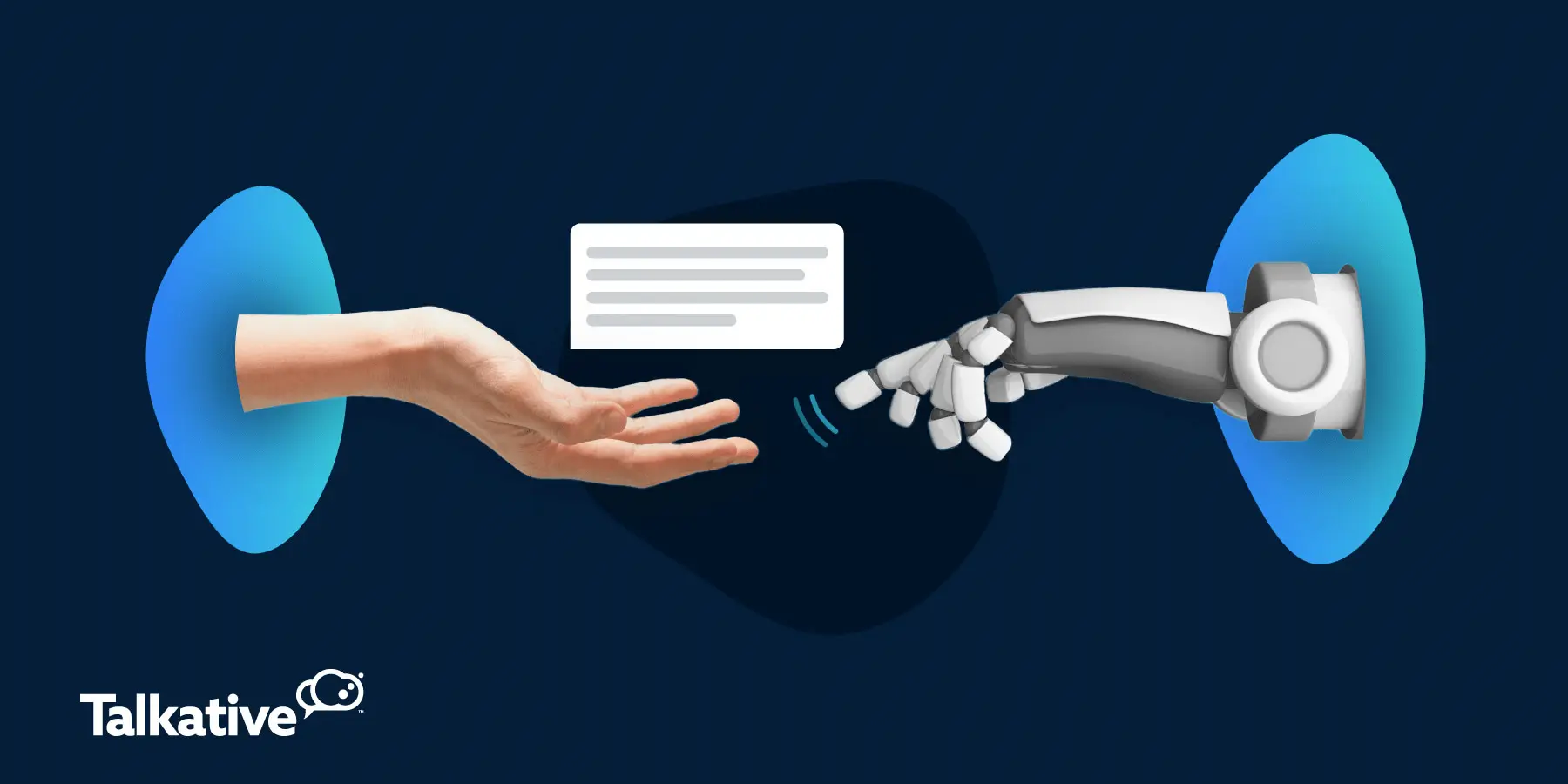
Use of AI technologies
Traditionally, chatbots worked using rule-based programming, scripted responses, and “decision trees”.
Although they’re still available, rule-based chatbots are limited in their functionality and capabilities.
In fact, these systems typically can only handle very simple inquiries (e.g. FAQs).
Because of this, AI-powered chatbots have become a much more popular option.
These advanced bots are powered by technologies such as conversational AI, natural language processing (NLP), generative AI, and machine learning.
However, using AI can impact both the initial and ongoing maintenance costs.
If you’re developing an AI chatbot in-house, you’ll need a team with specialised technical knowledge.
This often necessitates hiring in-house AI experts or outsourcing to third-party developers.
If you’re using an external chatbot provider, there may be an additional cost for AI capabilities.
This varies between providers, with the following being some common pricing models:
- Pricing tier: With tiered pricing plans, the cost may increase based on the level of AI sophistication or the number of features included. Basic tiers may only offer limited functionality, while higher tiers include more advanced AI capabilities.
- AI tokens: Some providers charge based on the number of AI tokens used or the amount of data processed. In this model, each token represents a portion of the language model’s computational effort, and you'll be billed according to how many tokens are used during automated conversations.
- Per interaction: Another common pricing structure is charging per interaction. This means that a fee is charged each time a customer uses the AI chatbot. The price can vary depending on the complexity of the interaction or the number of users.
- Outcome-based: In some cases, chatbot providers charge based on the outcomes achieved, such as successful lead generation, completed transactions, or resolved customer inquiries.
Although artificial intelligence has a bigger price tag, it often translates to a higher chatbot ROI.
This is because AI-powered chatbots are far more sophisticated.
They can be trained to automate many support requests while handling complex queries, and tasks.
Plus, if you opt for a generative AI-powered solution, you’ll enjoy lower deployment costs.
This is because GenAI bots work off knowledge bases rather than intents or intricate conversation flows.
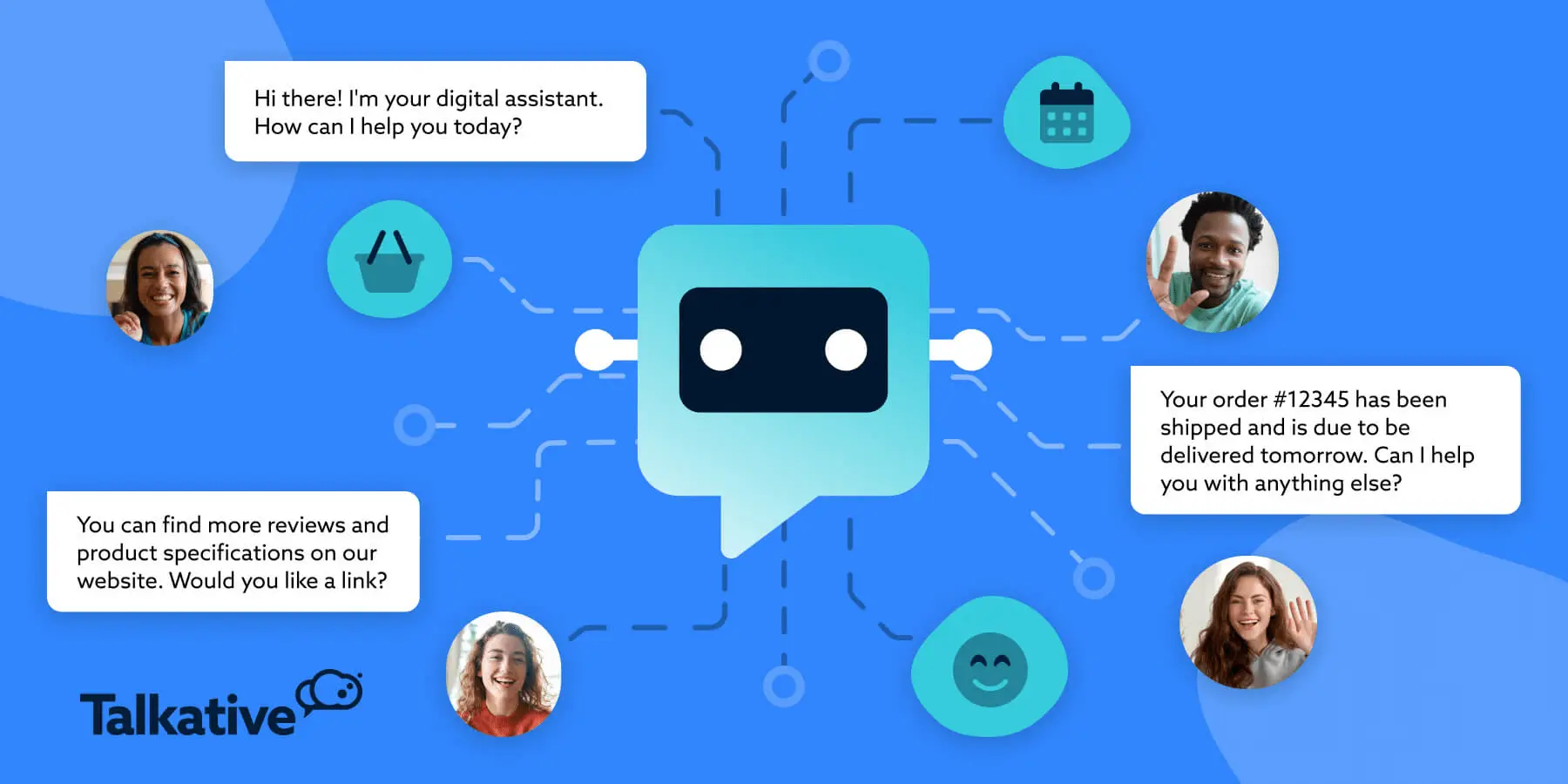
Scalability
As your business grows, you’ll have to scale your bot to handle higher volumes of queries.
You might also need to expand its functionality.
This means you’ll need a chatbot solution that can scale without compromising performance or user experience.
Scaling a chatbot with a provider can incur additional costs like upgrading your pricing plan, purchasing add-ons, or increasing AI capabilities.
Doing so internally will also significantly increase the financial and operational resources required.

Maintenance
Once a chatbot is operational, there’s an ongoing cost involved to keep it updated.
This maintenance is essential to ensure the chatbot performs well and remains secure.
It’s also necessary to keep up with evolving customer needs, new business offerings, and advancements in AI customer service.
Ongoing maintenance includes regular software updates, bug fixes, and improvements to the bot's capabilities and functionality.
If you’ve built your chatbot internally, this will be your responsibility and will require additional investment (roughly 30% of the original set-up cost annually).
However, if you use an established provider, ongoing maintenance can be mainly handled by them.
The cost of this is typically included in the pricing plan.
Providers also typically have a team for customer success/support who can help you with any internal maintenance required.

2. Measuring the benefits
Once you’ve determined the cost of implementing a chatbot, you can weigh it up against the benefits.
The below key benefits contribute to chatbot ROI…
Reduced operational costs
One tangible benefit of using a chatbot is operational cost savings once implemented.
In fact, bots can save business leaders an average of $300,000 per year and reduce overall support costs by 30%.
An AI chatbot can provide customer self-service and answer a wide range of chat inquiries, from simple FAQs to more complex issues.
They can also handle repetitive tasks like processing purchases, tracking orders, or scheduling appointments.
This automated service cuts operational expenses by saving you agent time and resources.
It also reduces agent workloads, giving them more capacity for complex tasks, high-value customer interactions, and cases requiring human expertise.
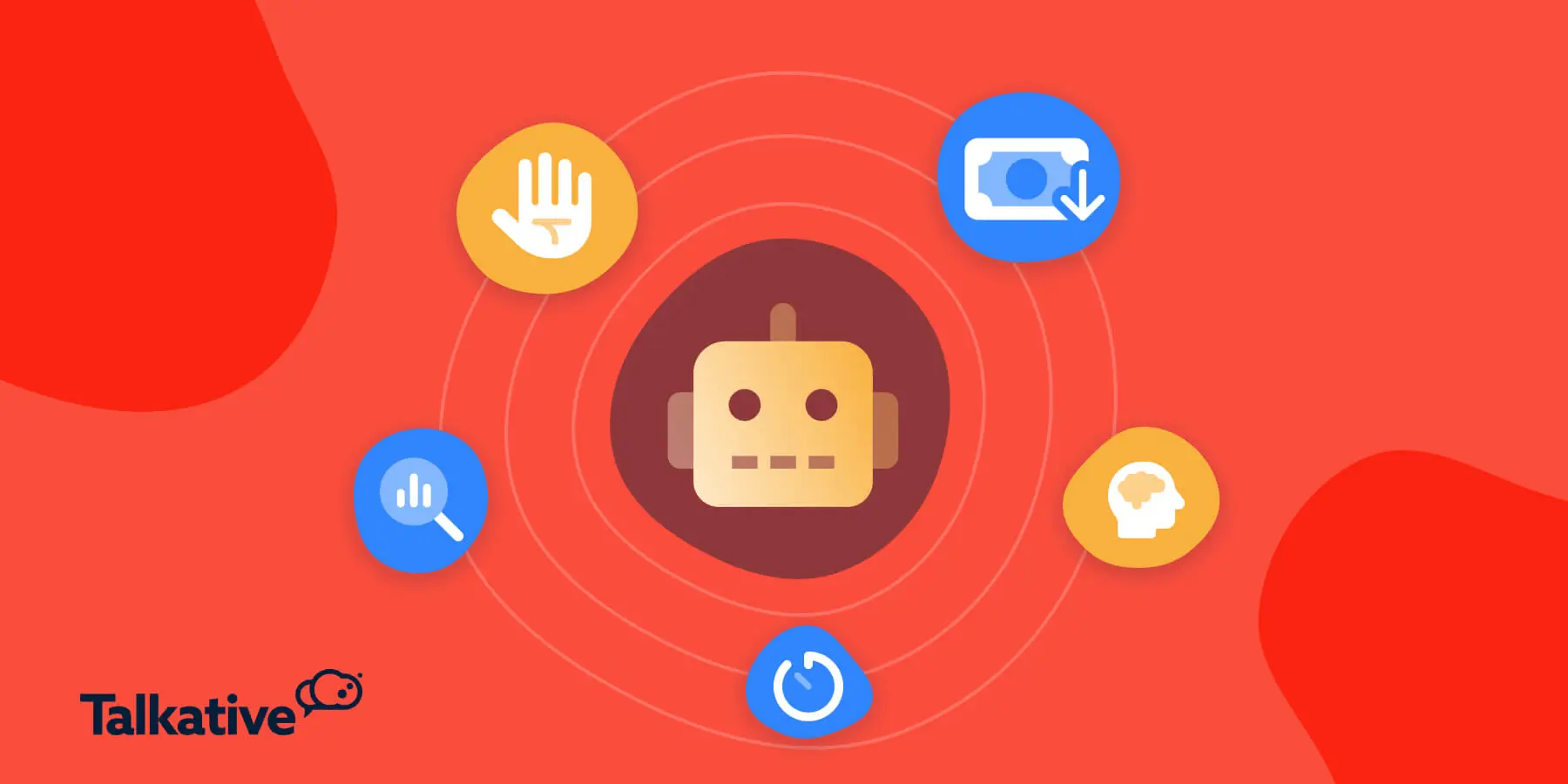
Labour savings
Beyond decreasing costs, chatbot automation also yields significant labour savings.
Case in point, bots saved businesses approximately 2.5 billion hours of work in 2023 alone.
They achieve this by taking over interactions and tasks typically handled by human agents.
This ability to offload work not only creates labour savings but also enhances staff productivity.
In fact, AI bots can increase agent productivity by 50% once implemented at scale.
What’s more, an effective chatbot enables you to scale support and handle higher volumes of interactions - without increasing agent headcount.
This translates to direct savings on the huge overhead associated with hiring, training, and managing a larger contact centre workforce.

Efficiency gains
Efficiency is an area where chatbots excel.
Unlike human agents, chatbots can manage hundreds or thousands of interactions concurrently.
It means they can significantly improve wait times, response times, and reduce customer service bottlenecks.
Another way bots drive efficiency is by reducing the volume of interactions across other channels.
In fact, some businesses report a 70% reduction in call, live chat, and email inquiries after implementing a virtual assistant.
In addition to diverting traffic from human-powered channels, advanced AI chatbots can achieve high resolution and containment rates.
Leading supplement retailer Healthspan, for example, has achieved an 90% resolution rate for product queries using Talkative’s generative AI-powered chatbot.
This eliminates the need for human intervention in many cases, creating time savings and boosting efficiency.

Revenue impact
Chatbots don’t just save money - they can also directly increase revenue.
Business leaders report 67% increased sales through chatbots, and 55% of companies see an increase in high-quality leads after deployment.
What's more, premium brand Bugaboo has seen a 35% increase in average order value from implementing a Talkative AI chatbot.
By offering instant, accurate responses and personalized recommendations, chatbots can resolve many customer inquiries about your products/services, availability, shipping, policies, and more.
This reduces cart abandonment, improves customer engagement rates, and drives faster purchase decisions by alleviating doubts.
In addition to increasing online sales, chatbots can also help businesses capture and qualify leads.
During interactions, chatbots can collect important information about potential customers.
This data can be given to sales and marketing teams, resulting in more targeted and effective efforts.
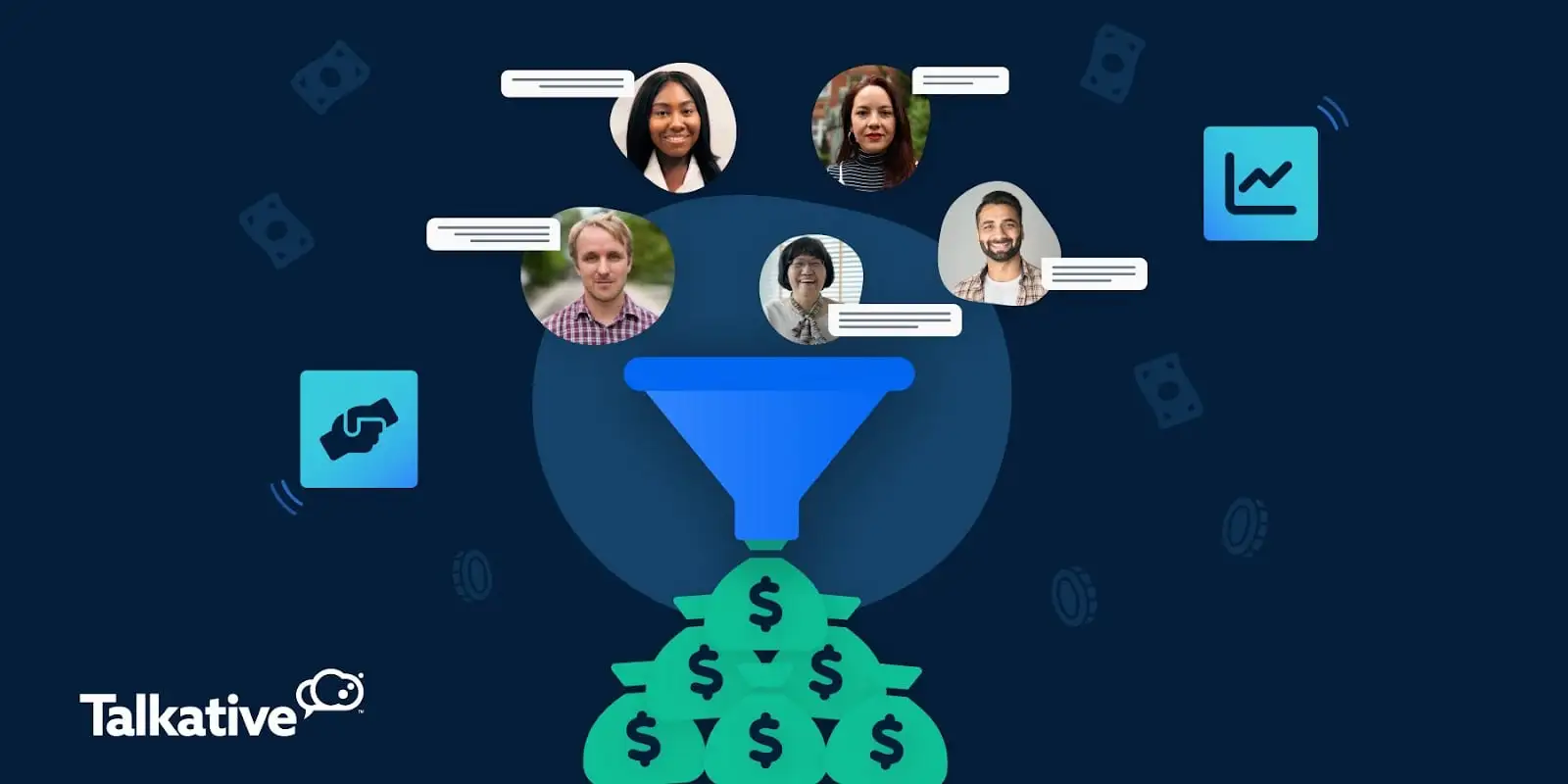
Customer satisfaction & customer retention
Today’s consumers want instant responses and swift resolutions.
Chatbots fulfil this demand by providing a convenient way for customers to access immediate assistance and self-service.
An AI-powered bot can answer countless queries in an accurate, personalised, and human-like way.
They can even provide multilingual customer support, ensuring accessibility and inclusivity.
This significantly enhances the digital customer experience, leading to increased satisfaction.
Another major factor in boosting customer satisfaction is 24/7 availability.
Unlike human agents who are limited by working hours, chatbots are available around the clock.
This ensures that customers can get help at any time, whatever their location or circumstance.
And, in cases where a customer’s issue can’t be resolved by the chatbot, it can seamlessly escalate the case.
Then, a human agent can take over or follow up as soon as one is available.
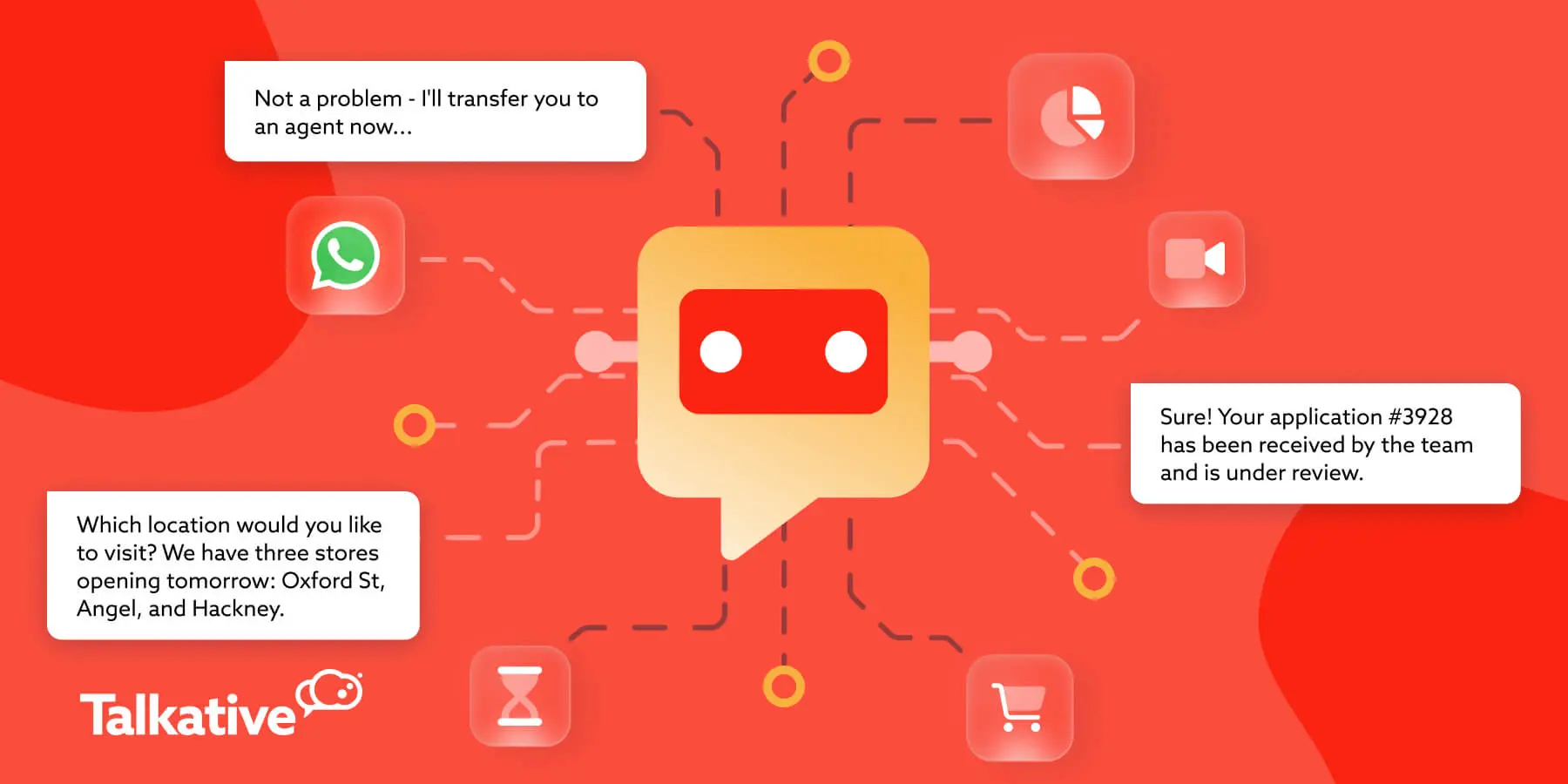
How do you calculate ROI for chatbots?
Now that we’ve covered the main key costs and benefits, the next step is calculating chatbot ROI.
By following the steps below, you can determine the financial return your bot is providing.
1. Identify your cost & benefits
The first step in calculating chatbot ROI is quantifying your costs and benefits.
As covered above, chatbot costs typically include:
- Initial development and deployment (internal vs. using a provider)
- Use of artificial intelligence
- Scaling alongside business needs
- User adoption (staff training and customer awareness/education)
- Ongoing maintenance and updates
It’s important to account for both upfront and recurring costs, as these will directly impact your chatbot ROI.
On the benefits side, you need to calculate the value a chatbot provides.
This includes measurable savings such as reduced costs, lower interaction volumes on other channels (e.g. phone support), and increased efficiency.
The benefits you focus on should align with your goals/objectives and the bot's purpose.
You should also consider any revenue-generating opportunities the chatbot creates.
This might be reduced cart abandonment, more online sales or upsells, or increased lead generation.
You should also include benefits related to improved CSAT and retention, as these translate into long-term financial gains.
By identifying and quantifying both costs and benefits, you'll create a solid foundation for calculating ROI.
The more precise you are in this step, the more accurate your chatbot ROI calculation will be.

2. Calculate using the ROI formula
Once you’ve quantified the cost and benefits, your next step is to apply the chatbot ROI calculation formula:

This gives you a percentage that represents the return on your investment.
Let’s break it down with a practical example…
Suppose the chatbot implementation costs your business £17,000 for the first year.
This includes development, deployment, AI capabilities, maintenance, etc.
You’ve also calculated that you’ll save £30,000 in labour costs, reduce telephony support expenses by £10,000, and generate an additional £5,000 in upselling.
So the total benefits amount to £45,000.
Now, using the chatbot ROI formula:

In this example, the chatbot generates an ROI of 164.7%.
It means that for every dollar spent, the business receives $1.64 in value.
This represents a very positive return, indicating that the chatbot is a valuable investment for the business.
It’s important to note that ROI can vary depending on chatbot functionality, customer adoption rates, and how well it’s integrated into your customer service operations.

3. Monitor over time
Chatbot ROI isn’t a one-time calculation - it’s a key metric that should be monitored over time.
Your chatbot’s capabilities will likely evolve with more training and technological advancements.
This means that the longer it is in operation, the more efficient and effective it should become.
Regularly reviewing its performance allows you to adjust and optimise it for maximum return.
This means tracking key performance indicators (KPIs) and key metrics such as:
- Response time
- CSAT score
- Containment rate
- Query resolution rates
- Conversion rates
- Error/confusion rate
- Escalation rate
By monitoring these KPIs, you can see whether your chatbot is delivering higher value over time.
Additionally, you might scale your bot’s functionality as customer demand increases or more tasks need to be automated.
For instance, integrating the chatbot with a knowledge base or extending it to other channels like messaging apps can further increase the benefits and impact ROI.
It’s also important to regularly revisit the annual cost (i.e. provider fees, maintenance, upgrades).
These are ongoing expenses that should be accounted for in future chatbot ROI calculations.
Monitoring chatbot ROI over time gives you insights into whether the chatbot is meeting business goals and adding value to the customer experience.
It also empowers you to make data-driven decisions about future investments in AI automation.
By monitoring performance over time, you can ensure the long-term success and profitability of your chatbot investment.

Case study: Klarna’s AI virtual assistant
Before we wrap up, let’s examine a real-world example to illustrate the ROI a successful chatbot can bring.
Leading payment provider Klarna launched an AI-powered chatbot in February 2024.
This virtual assistant was created to improve efficiency and enhance the digital shopping experience.
Available in the Klarna app, the bot has a range of capabilities.
From multilingual support to managing refunds/returns and helping customers cultivate healthy financial habits.
Since the launch, Klarna has seen exceptional results.
In its first month of operation alone, the AI bot successfully handled 2.3 million conversations - accounting for two-thirds of all customer service chats.
By managing this volume, it’s taken on the equivalent work of 700 full-time agents and reduced repetitive inquiries by 25%.
This efficiency has led to faster resolution times, with customers resolving queries in under 2 minutes (compared to 11 minutes previously).
It also enabled the bot to achieve the same CSAT scores as human-powered support.
As a result, Klarna’s bot is estimated to drive $40 million in profit improvement in 2024.
This real-world example demonstrates the immense potential of chatbots to not only streamline operations and reduce costs but also to enhance thecustomer experience and drive substantial revenue growth.

The takeaway: Maximize ROI with a Talkative AI chatbot
Calculating chatbot ROI is essential for ensuring your chatbot drives tangible value for your business.
By aligning chatbot functionality with business goals and customer needs, you can achieve substantial financial gains while driving long-term success, growth, and efficiency.
But if you want to ensure a positive ROI, you also need to find the right chatbot solution.
That’s where Talkative comes in.
Our platform provides a scalable and flexible chatbot solution that can be tailored to your specific needs.
With a Talkative chatbot, you can...
- Leverage the power of generative AI through multiple Large Language Models (LLMs).
- Create multiple AI knowledge bases that make your GenAI chatbot an expert in your brand, products, and services.
- Meet and serve customers across your website, app, and social messaging platforms.
- Seamlessly escalate to human agents when needed.
- Provide multilingual customer service without any additional downloads or plugins.
- Take advantage of an intuitive and user-friendly chatbot builder.
- Integrate with your existing systems and leading CRMs, including Salesforce, Mitel, and more.
In addition to chatbots and AI solutions, we offer a complete suite of customer contact channels and capabilities.
These include live chat, web calling, video chat, cobrowse, messaging, and more.
Want to learn more?
Book a demo with Talkative today, and check out our interactive product tour.



